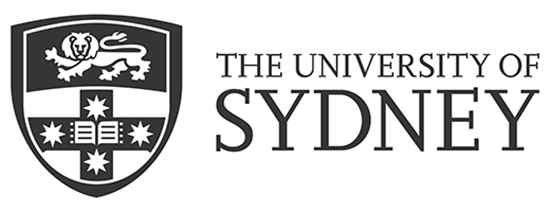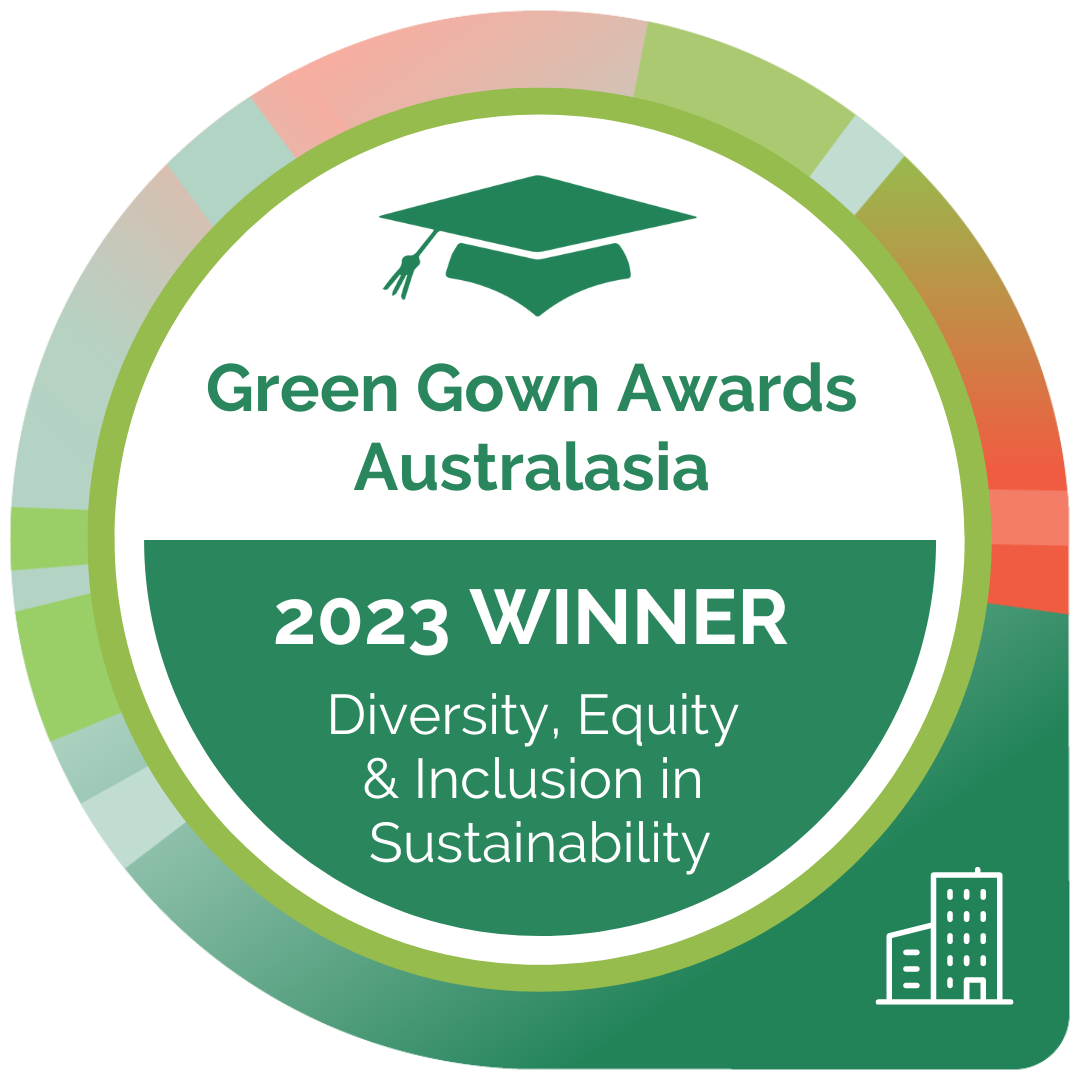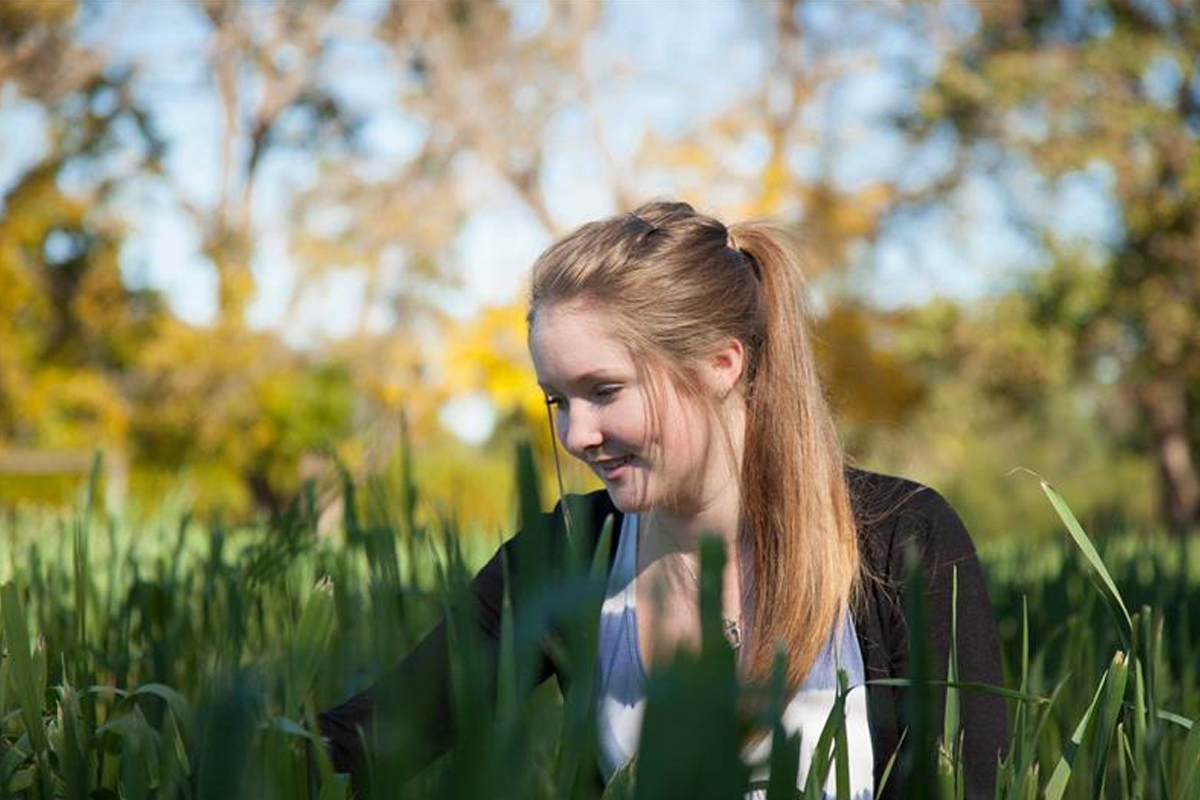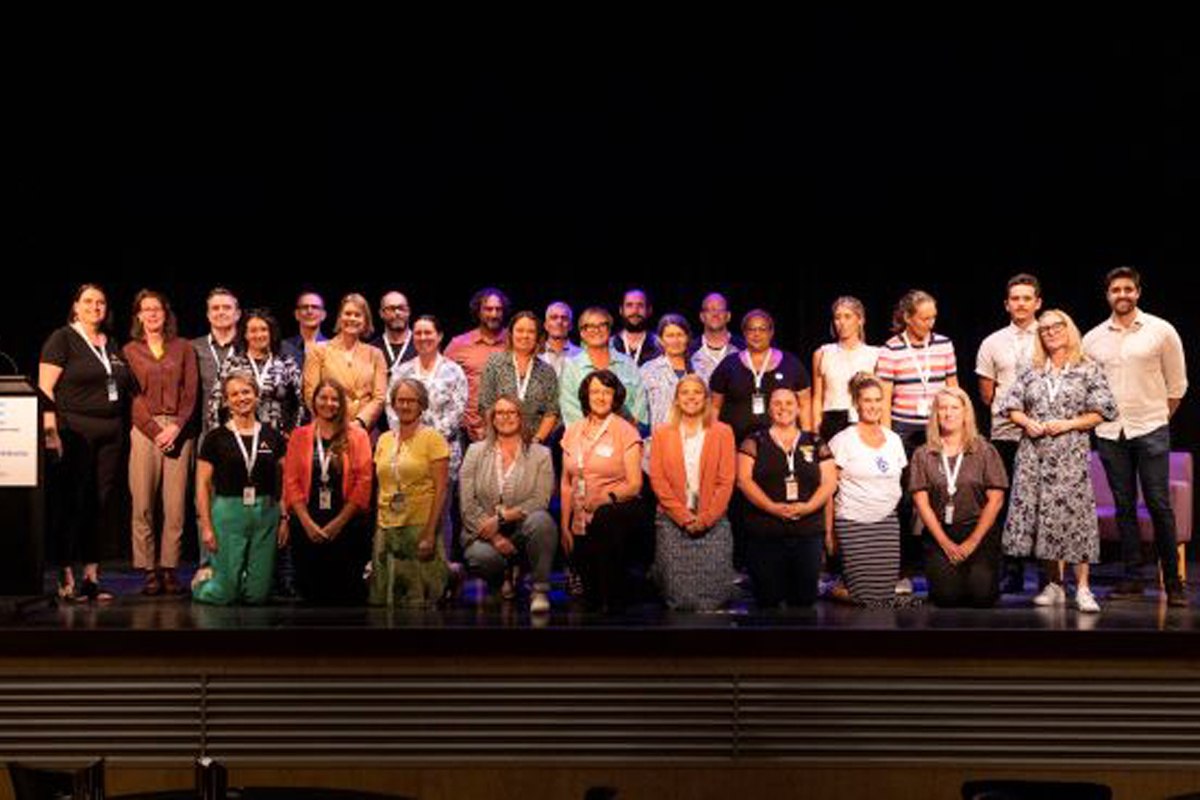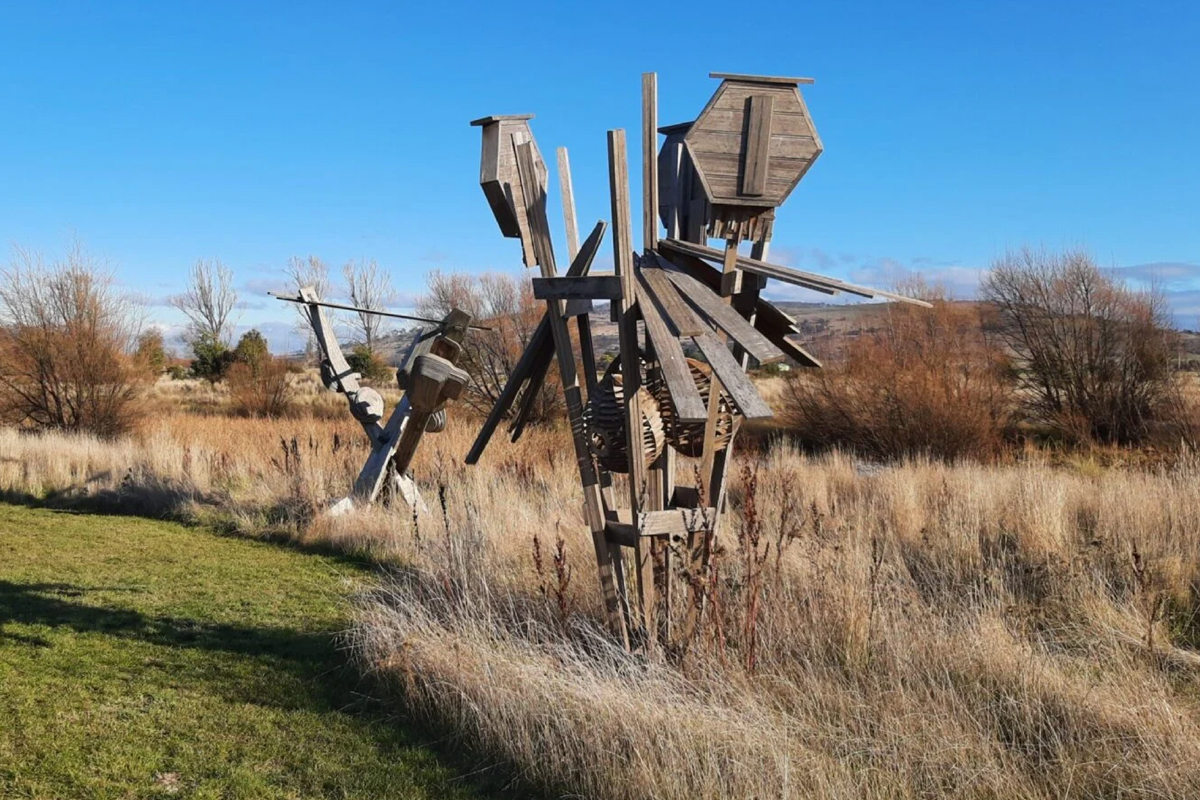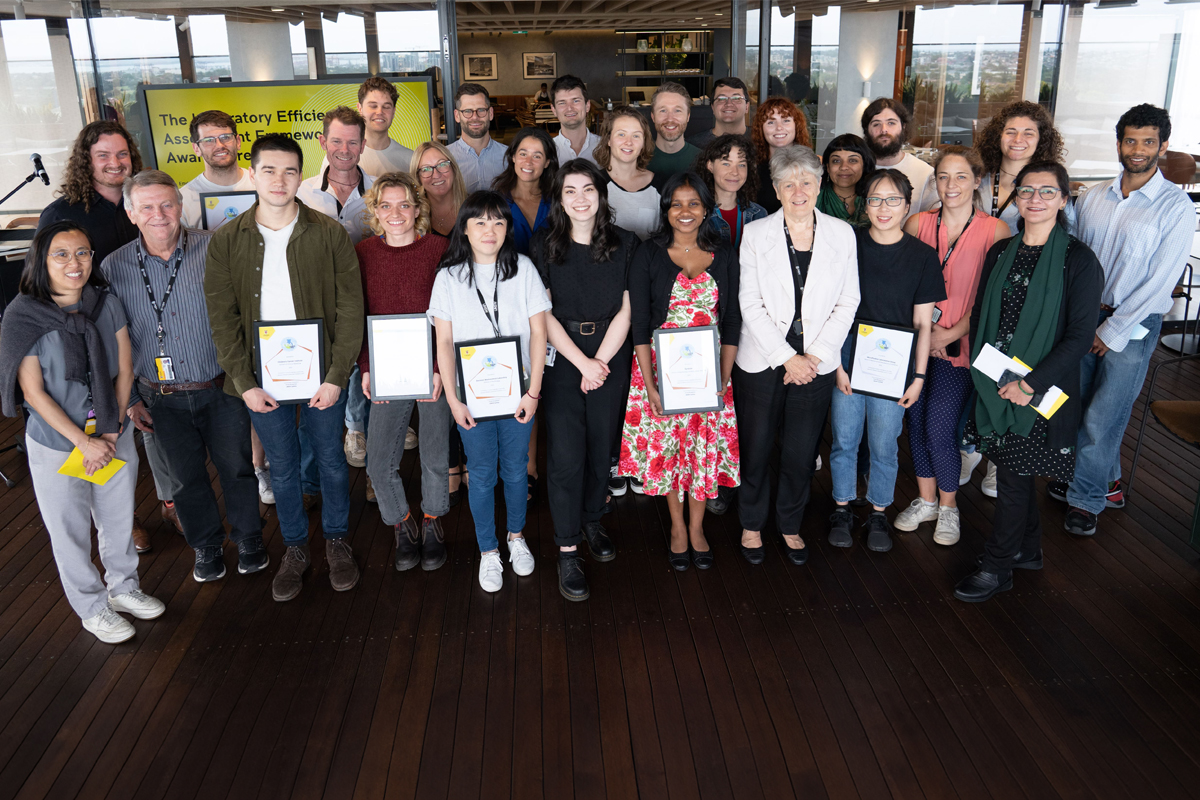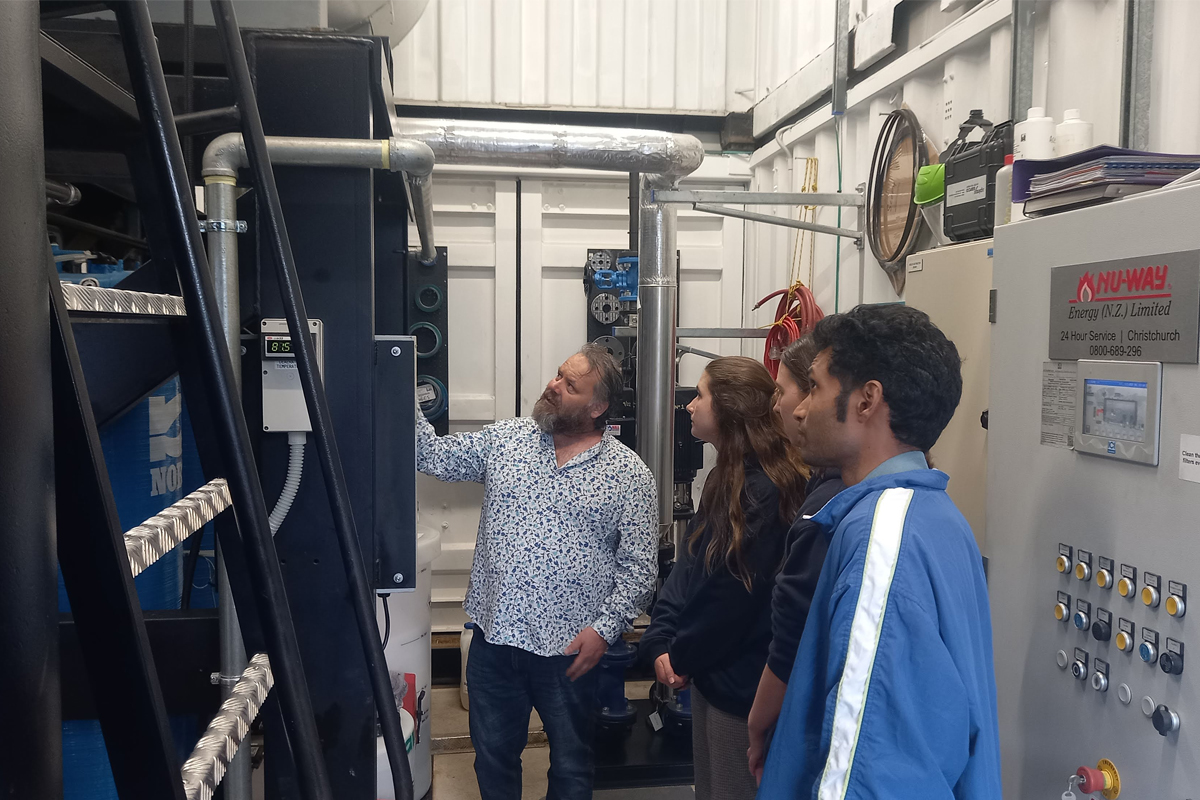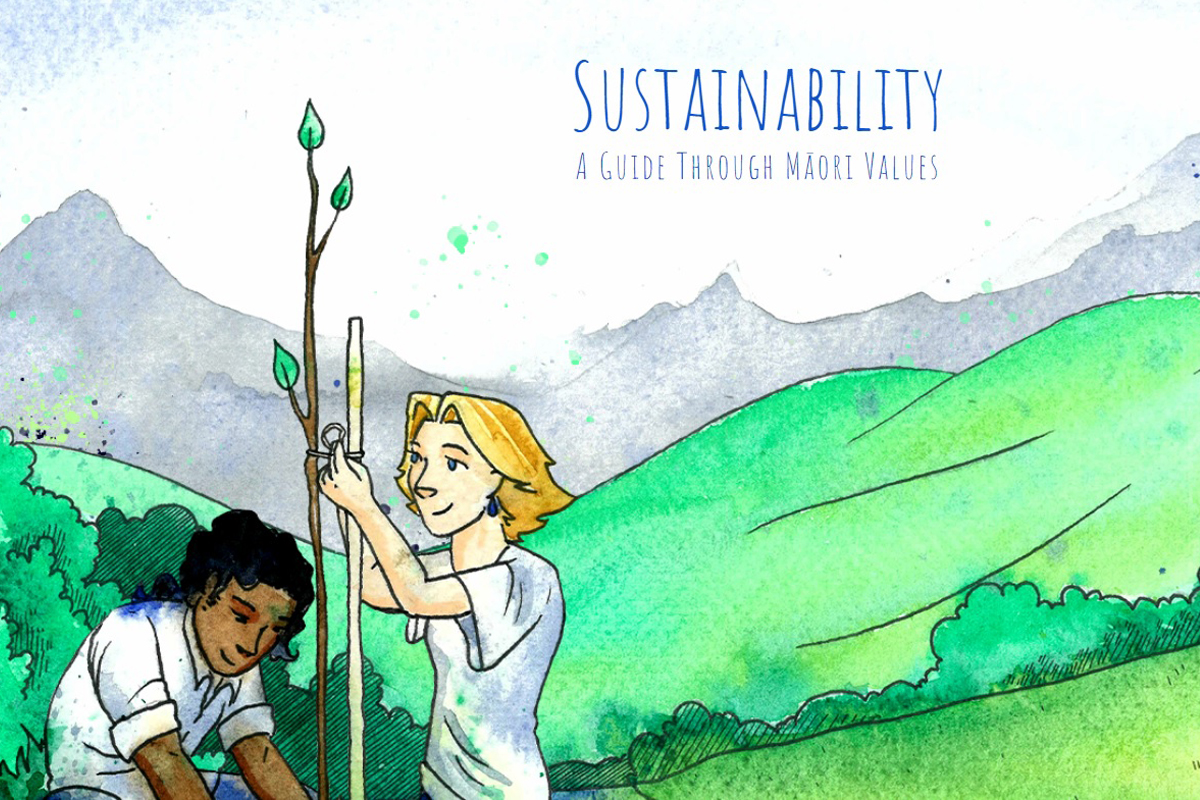Diversity, Equity & Inclusion in Sustainability/Winners category
Environmental knowledges and practices of Aboriginal and Torres Strait Islander peoples, shared and exchanged for thousands of years across innumerable generations, heals Country and spiritually connects people to place. The University of Sydney’s integrated strategies – Sustainability Strategy and One Sydney, Many People Indigenous Strategy – encourages a whole-of-University commitment to Caring for Country, and the valuing and respecting of Aboriginal and Torres Strait Islander people’s knowledge and culture.
Embedded in this ethos is the strengthening of our knowledge, appreciation and co-practice of Caring for Country, which guides our work and practices to one of custodianship – to all carry responsibility to engage, care and respect the environment and to those we serve, for the benefit of all generations to come. The Mapping, protecting and enriching Aboriginal Cultural Heritage landscapes project seeks to put this in practice, both in process as well as outcome. Agency, co-design and mutually beneficial partnerships were critical and foundational throughout all stages of the project, enabling transformation in operational, project, and engagement processes.
As a part of this project, the University commissioned ARC Heritage to undertake an Aboriginal Cultural Heritage Assessment (ACHA) of the cultural landscape of Llara Farm, a part of the Plant Breeding Institute near Narrabri NSW, in association with field staff from the Narrabri Local Aboriginal Land Council (NLALC). A prior sortie in 2019 had identified four culturally modified (scar) trees in remnant woodland, as well as rock holes and possible grinding features in Horse Arm Creek. As a Community-identified need to protect these cultural sites, along with the University’s desire to sustainably regenerate the landscape, the project was initiated in partnership with the NLALC to complete the study in tandem, to inform decision-making on future projects.
This study was aimed at engaging with the traditional Gamilaroi custodians and knowledge holders in recording these identified cultural sites, as well as surveying and assessing the fuller extent of the cultural landscape at the Farm. Contextual information on the environment, ethnography and archaeological site distribution, in relation to current and historical land use, was used to assess the significance of the recorded sites. This process included walking Country along with elders and community members, recording and connecting the wholeness of significant trees and areas to Place and to each other, providing culturally appropriate recognition of the importance of protection of sites and the significance of each one individually.
Following the completion of the study, workshops for feedback and discussion on mapping outcomes were established, bringing together Community stakeholders, LALC members, University Faculty of Science academics and Operations staff to generate recommendations and landscape action plans. Planning for a major planting on site was initiated, to establish a ‘green belt’ to protect sites, offering a natural barrier to protect against climate and livestock, and to repatriate the area with local and culturally significant native species. The planting of the site scheduled for late 2023 will also be a collaborative initiative, running Community tree planting events on-site inviting local community and University staff and students (based both regionally and city-based) to participate. The next phase of the project will explore plans to establish a ’food park’ on site, connecting research projects on native grains and bush foods, with the aim to increase its accessibility and availability.
In addition to helping us achieve commitment set out in both Sustainability and Indigenous Strategies, the project has aided our progress towards UN SDGs, enriching our partnership with local communities (SDG 17: Partnership for the goals), protecting and regenerating the unique biospheres and biodiversity on the lands in which we work (SDG 15: Life of Land) and embodying First Nation’s values and advocacy ensuring cultural heritage is mapped and embedded in decision-making (SDG 10: Reducing inequalities).
As well as providing a case model for reciprocal and co-designed projects with LALCs and local communities, the project has also forged new considerations for future campus planning working with stakeholders, multi-disciplinary and professional teams, that we are keen to emulate for other campuses moving forward. Due to the project’s success, the project has been refunded to complete the assessment at Camden NSW campus, engaging independent Tharawal local heritage assessors and LALC members.
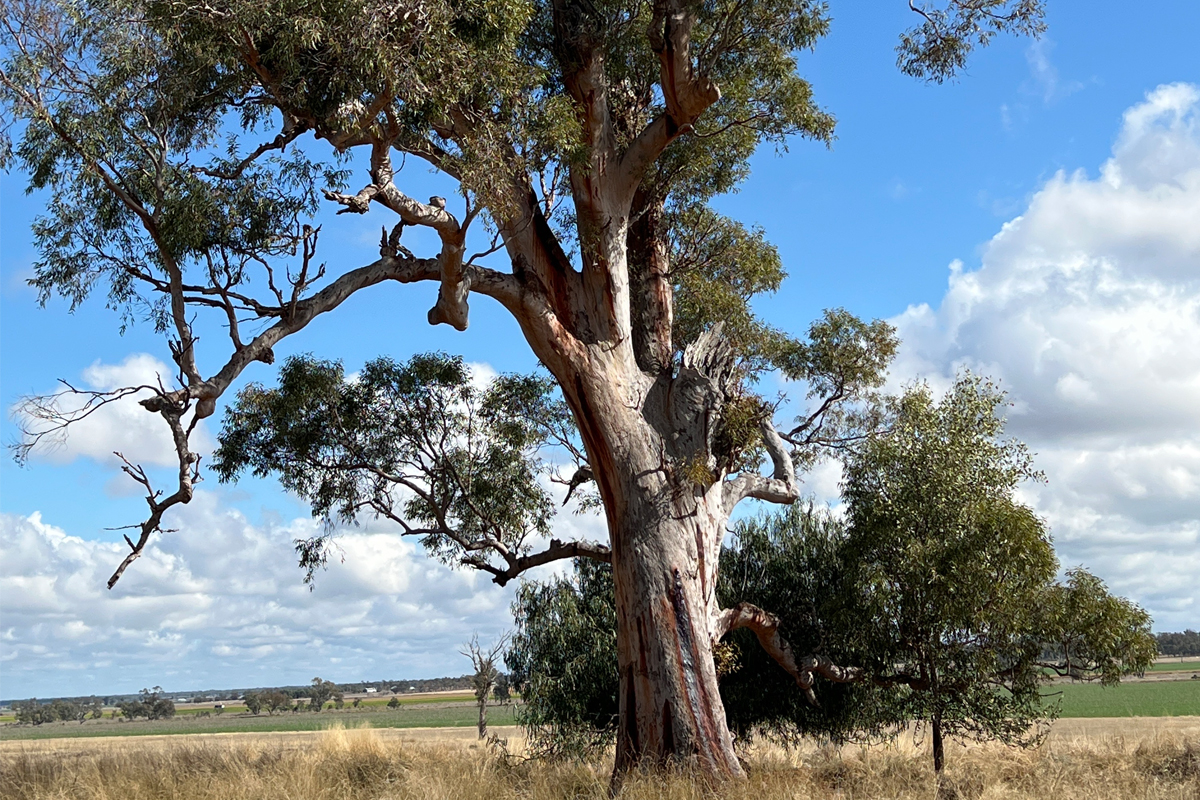
Environmental and social benefits
Key environmental and social benefits of the project include:
- provides a case model for Caring for Country practice – via reciprocal, mutually beneficial partnerships and co-designed projects with LALCs, local communities, and diverse University stakeholders,
- provides the foundation for research opportunities and core sustainability initiatives, including regeneration of land and biodiversity – including a major planting project to enable a native ‘green-belt’,
- engages and provides agency to traditional owners regarding the significance and management of cultural heritage,
- provides a connected and contextual background to the cultural and natural landscape of University campuses, and identified areas known and predicted to have cultural sensitivity,
- identified heritage and cultural features, and assessed their significance in respect to the wider natural and cultural landscape,
- highlighted potential impacts and provided recommended management actions for climate and Aboriginal cultural heritage protection,
- enriched landscape design from consultation and embedded First Nation’s design principles,
- increased cultural competence of University staff and forged deeper understanding and connection to the landscapes in which they work, walking Country along with elders and community members,
- reaffirmed appropriate and respectful usages of Indigenous Cultural Intellectual Property (ICIP),
- benefit from not just the output (the what), but the process (the how) – provides a methodology and ongoing legacy for operational, engagement and project processes that can be employed at other University campuses for sustainability strategy implementation, and better-informed decision-making on future campus planning.
Leadership and engagement
Embedded in the project’s ethos is the strengthening of knowledge and co-practice of Caring for Country, which guides our work and practises to one of partnership and custodianship – to all carry responsibility to engage, care and respect the environment and work in partnership and make decisions with those who equally care for the land.
As a Community-identified need to protect cultural sites, along with the University’s desire to sustainably regenerate the landscape, the project provides a case model for Caring for Country practice – via reciprocal, mutually beneficial partnerships and co-designed projects with LALCs, local communities, and diverse University stakeholders.
It both engages and provides agency to traditional owners regarding the significance and management of cultural heritage, whilst providing the university with a connected and contextual background to the cultural and natural landscape of their campuses. The study has highlighted potential impacts and provided recommended management actions for climate and Aboriginal cultural heritage protection, which has informed better decision-making on the implementation of sustainability initiatives for the site.
Significance to the sector
The opportunity for the University sector to grow its Cultural Competence and embed and engage with Aboriginal and Torres Strait Islander Communities as part of academic and business-as-usual operations is core to improving cultural safety, the valuing and recognition of Aboriginal and Torres Strait people’s knowledge and culture.
This project required business-as-usual processes to be adapted, and opportunities to complete the work on Country with elders and community members forged deeper connections the lands being examined. This project has also generated good will within the University, generating new ideas and collaborations across research, education and future sustainability and Indigenous strategy projects.
Wider societal impact
The Aboriginal Heritage Study that formed part of this project demonstrates that the cultural landscape at Llara Farm is highly significant to Gamilaroi people. Eleven sites of cultural significance were identified during field surveys on the 2nd and 3rd August 2022. These included ten culturally modified trees and a rock shelf in Horse Arm Creek containing cultural features (rock holes and grinding grooves). Additionally, two areas with archaeological potential were identified. These sites were registered on the Aboriginal Heritage Information Management System (AHIMS) on 23rd September 2022.
Given the extensive historical land clearing that has occurred in this area, they represent key remaining visible aspects of traditional Aboriginal lifeways and are important complementary evidence for the Aboriginal people’s occupation of the broader region.
Learner/Graduate employer impact
As the project develops, we are keen to work with Master of Sustainability Capstone students and undergraduates through Industry and Community Project Units (ICPUs) to scope and work on sustainability initiatives as part of the strategy’s implementation in regional and remote campuses. Within Sustainability Capstones and ICPUs, students swap the traditional lectures and assessments for hands-on group project work with the team and/or University partners – which may come from industry, community or government. Over the semester, the students work in small groups to undertake a project set by that partner and challenged to come up with a creative solution to a real problem. With mutually beneficial, hands-on units, it provides graduates and their future employers with the skills, knowledge and values they need to thrive and lead in a rapidly changing world.
Students will also have the opportunity to grow their own cultural competence through the project, to growing skills to actively, ethically, respectfully, and successfully engage across and between cultures. Student will also mature their understanding of Aboriginal and Torres Strait Islander cultures, knowledge systems, and Caring for Country practices.
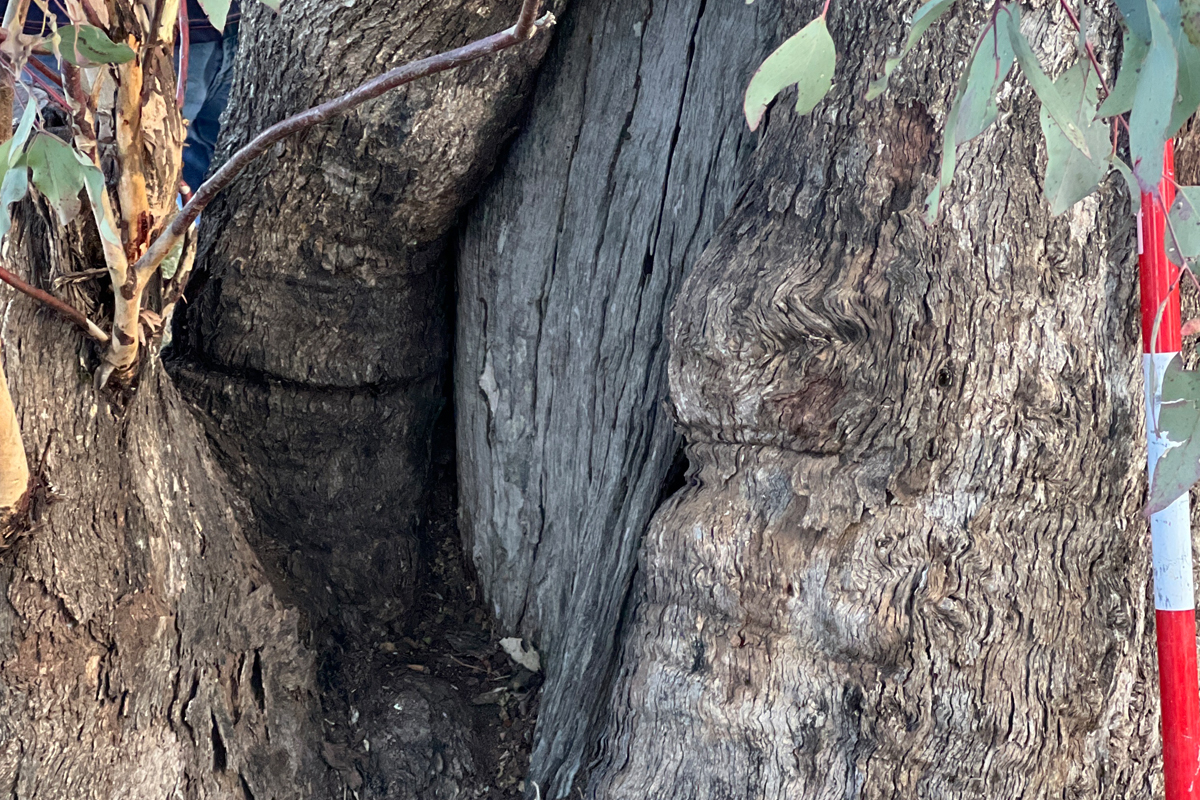
Top 3 learnings
Category finalists
Climate Action/Winners
Climate Action/Winners
Benefitting Society/Winners
Benefitting Society/Winners
Sustainability Champion – Student/Winners
Sustainability Champion – Student/Winners
Creating Impact/Winners
Creating Impact/Winners
Diversity, Equity & Inclusion in Sustainability
Diversity, Equity & Inclusion in Sustainability
Sustainability Champion – Student/Winners
Sustainability Champion – Student/Winners
Creating Impact/Winners
Creating Impact/Winners
Leading the Circular Economy/Winners
Leading the Circular Economy/Winners
Creating Impact/Winners
Creating Impact/Winners
Next Generation Learning & Skills/Winners
Next Generation Learning & Skills/Winners
Leading the Circular Economy/Winners
Leading the Circular Economy/Winners
Sustainability Institution of the Year/Winners
Sustainability Institution of the Year/Winners
Next Generation Learning & Skills/Winners
Next Generation Learning & Skills/Winners
Sustainability Champion – Staff/Winners
Sustainability Champion – Staff/Winners
Sustainability Champion – Student/Winners
Sustainability Champion – Student/Winners
Diversity, Equity & Inclusion in Sustainability
Diversity, Equity & Inclusion in Sustainability
Next Generation Learning & Skills/Winners
Next Generation Learning & Skills/Winners
Sustainability Champion – Staff/Winners
Sustainability Champion – Staff/Winners
Sustainability Champion – Staff/Winners
Sustainability Champion – Staff/Winners
Student Engagement/Winners
Student Engagement/Winners
2023 winners
Benefitting Society/Winners
Benefitting Society/Winners
Diversity, Equity & Inclusion in Sustainability/Winners
Diversity, Equity & Inclusion in Sustainability/Winners
Climate Action/Winners
Climate Action/Winners
Sustainability Institution of the Year/Winners
Sustainability Institution of the Year/Winners
Creating Impact/Winners
Creating Impact/Winners
Creating Impact/Winners
Creating Impact/Winners
Top 3 learnings
Diversity, Equity & Inclusion in Sustainability/Winners category
Environmental knowledges and practices of Aboriginal and Torres Strait Islander peoples, shared and exchanged for thousands of years across innumerable generations, heals Country and spiritually connects people to place. The University of Sydney’s integrated strategies – Sustainability Strategy and One Sydney, Many People Indigenous Strategy – encourages a whole-of-University commitment to Caring for Country, and the valuing and respecting of Aboriginal and Torres Strait Islander people’s knowledge and culture.
Embedded in this ethos is the strengthening of our knowledge, appreciation and co-practice of Caring for Country, which guides our work and practices to one of custodianship – to all carry responsibility to engage, care and respect the environment and to those we serve, for the benefit of all generations to come. The Mapping, protecting and enriching Aboriginal Cultural Heritage landscapes project seeks to put this in practice, both in process as well as outcome. Agency, co-design and mutually beneficial partnerships were critical and foundational throughout all stages of the project, enabling transformation in operational, project, and engagement processes.
As a part of this project, the University commissioned ARC Heritage to undertake an Aboriginal Cultural Heritage Assessment (ACHA) of the cultural landscape of Llara Farm, a part of the Plant Breeding Institute near Narrabri NSW, in association with field staff from the Narrabri Local Aboriginal Land Council (NLALC). A prior sortie in 2019 had identified four culturally modified (scar) trees in remnant woodland, as well as rock holes and possible grinding features in Horse Arm Creek. As a Community-identified need to protect these cultural sites, along with the University’s desire to sustainably regenerate the landscape, the project was initiated in partnership with the NLALC to complete the study in tandem, to inform decision-making on future projects.
This study was aimed at engaging with the traditional Gamilaroi custodians and knowledge holders in recording these identified cultural sites, as well as surveying and assessing the fuller extent of the cultural landscape at the Farm. Contextual information on the environment, ethnography and archaeological site distribution, in relation to current and historical land use, was used to assess the significance of the recorded sites. This process included walking Country along with elders and community members, recording and connecting the wholeness of significant trees and areas to Place and to each other, providing culturally appropriate recognition of the importance of protection of sites and the significance of each one individually.
Following the completion of the study, workshops for feedback and discussion on mapping outcomes were established, bringing together Community stakeholders, LALC members, University Faculty of Science academics and Operations staff to generate recommendations and landscape action plans. Planning for a major planting on site was initiated, to establish a ‘green belt’ to protect sites, offering a natural barrier to protect against climate and livestock, and to repatriate the area with local and culturally significant native species. The planting of the site scheduled for late 2023 will also be a collaborative initiative, running Community tree planting events on-site inviting local community and University staff and students (based both regionally and city-based) to participate. The next phase of the project will explore plans to establish a ’food park’ on site, connecting research projects on native grains and bush foods, with the aim to increase its accessibility and availability.
In addition to helping us achieve commitment set out in both Sustainability and Indigenous Strategies, the project has aided our progress towards UN SDGs, enriching our partnership with local communities (SDG 17: Partnership for the goals), protecting and regenerating the unique biospheres and biodiversity on the lands in which we work (SDG 15: Life of Land) and embodying First Nation’s values and advocacy ensuring cultural heritage is mapped and embedded in decision-making (SDG 10: Reducing inequalities).
As well as providing a case model for reciprocal and co-designed projects with LALCs and local communities, the project has also forged new considerations for future campus planning working with stakeholders, multi-disciplinary and professional teams, that we are keen to emulate for other campuses moving forward. Due to the project’s success, the project has been refunded to complete the assessment at Camden NSW campus, engaging independent Tharawal local heritage assessors and LALC members.

Environmental and social benefits
Key environmental and social benefits of the project include:
- provides a case model for Caring for Country practice – via reciprocal, mutually beneficial partnerships and co-designed projects with LALCs, local communities, and diverse University stakeholders,
- provides the foundation for research opportunities and core sustainability initiatives, including regeneration of land and biodiversity – including a major planting project to enable a native ‘green-belt’,
- engages and provides agency to traditional owners regarding the significance and management of cultural heritage,
- provides a connected and contextual background to the cultural and natural landscape of University campuses, and identified areas known and predicted to have cultural sensitivity,
- identified heritage and cultural features, and assessed their significance in respect to the wider natural and cultural landscape,
- highlighted potential impacts and provided recommended management actions for climate and Aboriginal cultural heritage protection,
- enriched landscape design from consultation and embedded First Nation’s design principles,
- increased cultural competence of University staff and forged deeper understanding and connection to the landscapes in which they work, walking Country along with elders and community members,
- reaffirmed appropriate and respectful usages of Indigenous Cultural Intellectual Property (ICIP),
- benefit from not just the output (the what), but the process (the how) – provides a methodology and ongoing legacy for operational, engagement and project processes that can be employed at other University campuses for sustainability strategy implementation, and better-informed decision-making on future campus planning.
Leadership and engagement
Embedded in the project’s ethos is the strengthening of knowledge and co-practice of Caring for Country, which guides our work and practises to one of partnership and custodianship – to all carry responsibility to engage, care and respect the environment and work in partnership and make decisions with those who equally care for the land.
As a Community-identified need to protect cultural sites, along with the University’s desire to sustainably regenerate the landscape, the project provides a case model for Caring for Country practice – via reciprocal, mutually beneficial partnerships and co-designed projects with LALCs, local communities, and diverse University stakeholders.
It both engages and provides agency to traditional owners regarding the significance and management of cultural heritage, whilst providing the university with a connected and contextual background to the cultural and natural landscape of their campuses. The study has highlighted potential impacts and provided recommended management actions for climate and Aboriginal cultural heritage protection, which has informed better decision-making on the implementation of sustainability initiatives for the site.
Significance to the sector
The opportunity for the University sector to grow its Cultural Competence and embed and engage with Aboriginal and Torres Strait Islander Communities as part of academic and business-as-usual operations is core to improving cultural safety, the valuing and recognition of Aboriginal and Torres Strait people’s knowledge and culture.
This project required business-as-usual processes to be adapted, and opportunities to complete the work on Country with elders and community members forged deeper connections the lands being examined. This project has also generated good will within the University, generating new ideas and collaborations across research, education and future sustainability and Indigenous strategy projects.
Wider societal impact
The Aboriginal Heritage Study that formed part of this project demonstrates that the cultural landscape at Llara Farm is highly significant to Gamilaroi people. Eleven sites of cultural significance were identified during field surveys on the 2nd and 3rd August 2022. These included ten culturally modified trees and a rock shelf in Horse Arm Creek containing cultural features (rock holes and grinding grooves). Additionally, two areas with archaeological potential were identified. These sites were registered on the Aboriginal Heritage Information Management System (AHIMS) on 23rd September 2022.
Given the extensive historical land clearing that has occurred in this area, they represent key remaining visible aspects of traditional Aboriginal lifeways and are important complementary evidence for the Aboriginal people’s occupation of the broader region.
Learner/Graduate employer impact
As the project develops, we are keen to work with Master of Sustainability Capstone students and undergraduates through Industry and Community Project Units (ICPUs) to scope and work on sustainability initiatives as part of the strategy’s implementation in regional and remote campuses. Within Sustainability Capstones and ICPUs, students swap the traditional lectures and assessments for hands-on group project work with the team and/or University partners – which may come from industry, community or government. Over the semester, the students work in small groups to undertake a project set by that partner and challenged to come up with a creative solution to a real problem. With mutually beneficial, hands-on units, it provides graduates and their future employers with the skills, knowledge and values they need to thrive and lead in a rapidly changing world.
Students will also have the opportunity to grow their own cultural competence through the project, to growing skills to actively, ethically, respectfully, and successfully engage across and between cultures. Student will also mature their understanding of Aboriginal and Torres Strait Islander cultures, knowledge systems, and Caring for Country practices.

Related finalists
Climate Action/Winners
Climate Action/Winners
Benefitting Society/Winners
Benefitting Society/Winners
Sustainability Champion – Student/Winners
Sustainability Champion – Student/Winners
Creating Impact/Winners
Creating Impact/Winners
Diversity, Equity & Inclusion in Sustainability
Diversity, Equity & Inclusion in Sustainability
Sustainability Champion – Student/Winners
Sustainability Champion – Student/Winners
Creating Impact/Winners
Creating Impact/Winners
Leading the Circular Economy/Winners
Leading the Circular Economy/Winners
Creating Impact/Winners
Creating Impact/Winners
Next Generation Learning & Skills/Winners
Next Generation Learning & Skills/Winners
Leading the Circular Economy/Winners
Leading the Circular Economy/Winners
Sustainability Institution of the Year/Winners
Sustainability Institution of the Year/Winners
Next Generation Learning & Skills/Winners
Next Generation Learning & Skills/Winners
Sustainability Champion – Staff/Winners
Sustainability Champion – Staff/Winners
Sustainability Champion – Student/Winners
Sustainability Champion – Student/Winners
Diversity, Equity & Inclusion in Sustainability
Diversity, Equity & Inclusion in Sustainability
Next Generation Learning & Skills/Winners
Next Generation Learning & Skills/Winners
Sustainability Champion – Staff/Winners
Sustainability Champion – Staff/Winners
Sustainability Champion – Staff/Winners
Sustainability Champion – Staff/Winners
Student Engagement/Winners
Student Engagement/Winners
Other finalists
Climate Action
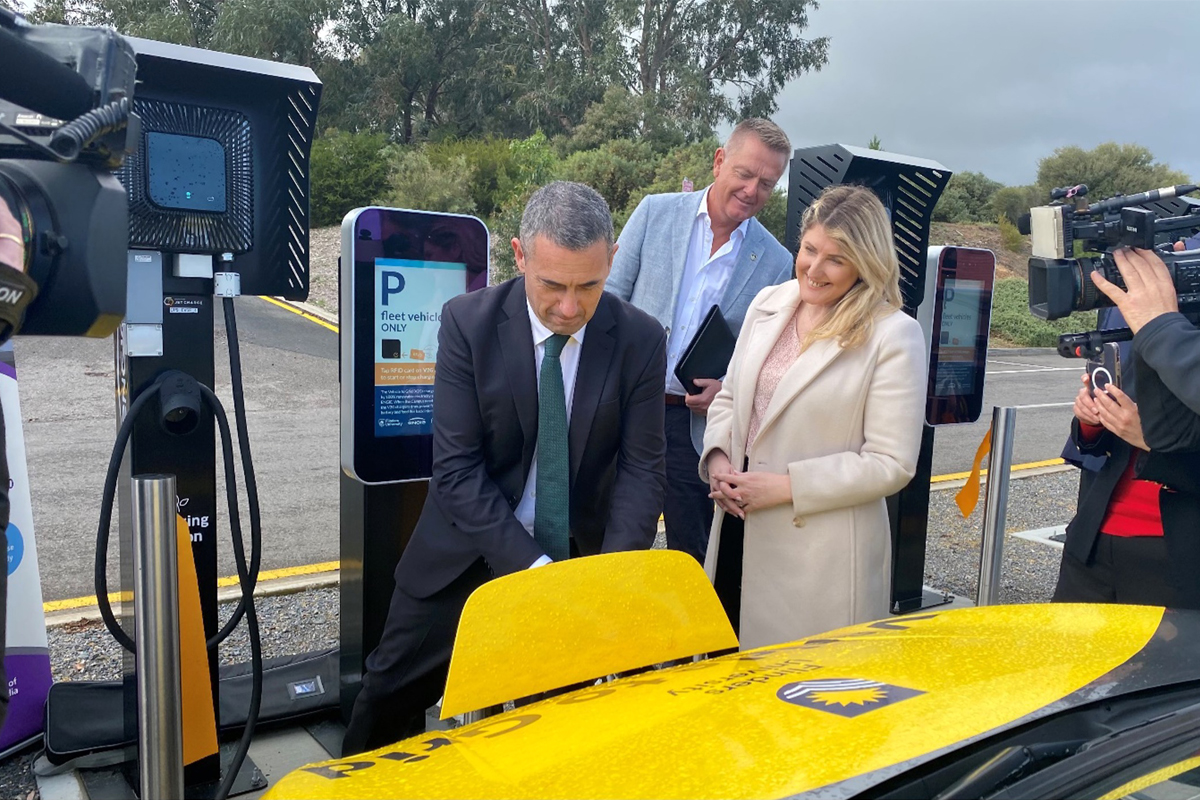
Driving Towards Tomorrow’s Campus with Vehicle-to-Grid EV Technology
As part of Flinders University’s drive to innovate and become a leader in climate action, the University launched its Vehicle-to-Grid (V2G) initiative. This involved installing and maintaining 20x V2G and smart chargers for its growing electric vehicle fleet. Leveraging 100% renewable energy generated by ENGIE’s Willogoleche Wind Farm and Flinders University’s solar power systems, this enables the storage of renewable energy in EV batteries to be discharged on campus during peak demand periods. Hence, allows for these EV fleets to operate as a Virtual Power Plant (VPP) to deliver peak demand management and optimization of behind-the-meter generation.
Overall, this initiative demonstrates the reliability and scalability of bi-directional and uni-directional smart-charging systems for EVs in reducing GHG emissions while facilitating teaching, research, and innovation opportunities. Moreover, it exemplifies a sustainable and innovative solution to scale energy storage technology and increase renewables.
Sustainability Champion – Staff/Winners
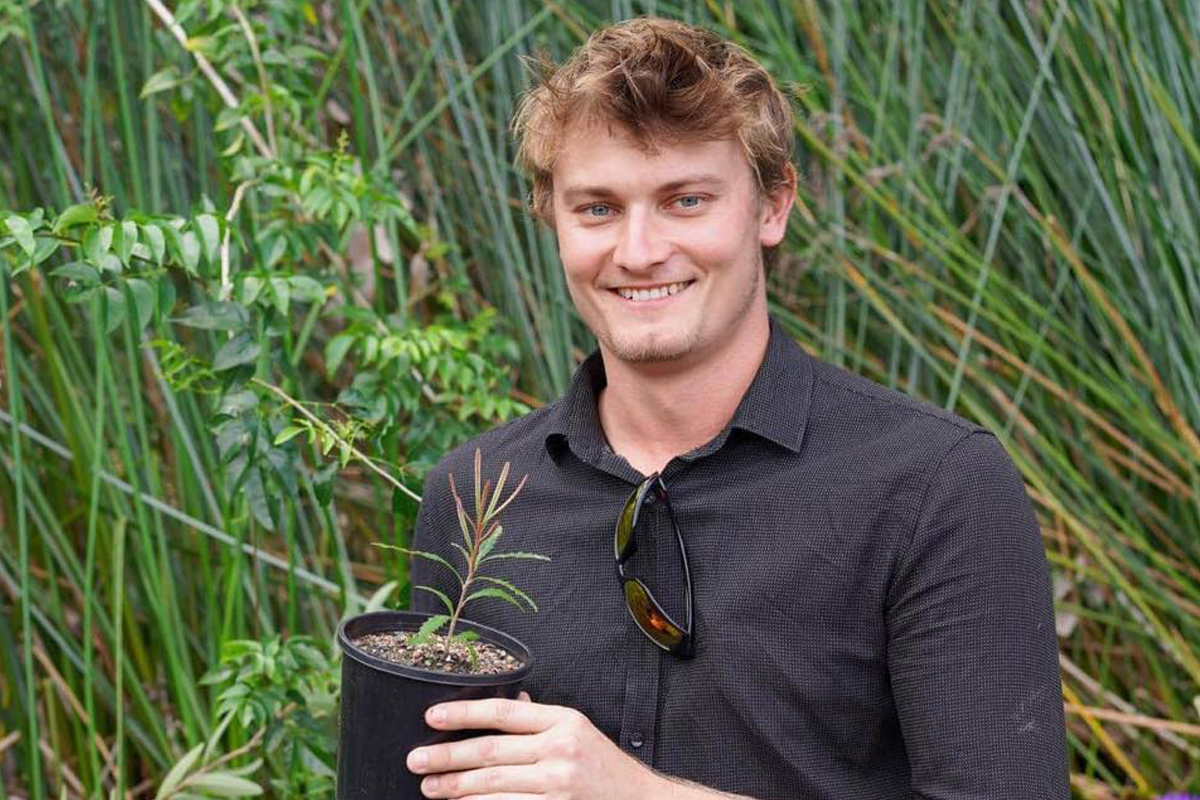
Brandan Espe
Environmental Officer / Acting Grounds Supervisor
Brandan has brought over 50 federally listed Endangered species of plant into the James Cook University living collection, many of which have never been cultivated and are found in no other collection in the world.
Of these, over half have been sustainably wild collected, inclusive of field and clone data, so they can be used for ongoing conservation, research and teaching, the remaining being sourced from private and partner organisations through favours of service or trades.
He personally funded the project from 2019-2022, until funding was awarded for the program due to its success, with the program now being engrained into the Universities landscapes for ongoing management should he leave JCU, creating a threatened species legacy collection.
The program has now expanded beyond this, with an additional 48 species now funded for further addition, some of which are only known from less than 5 sightings in history.
Student Engagement
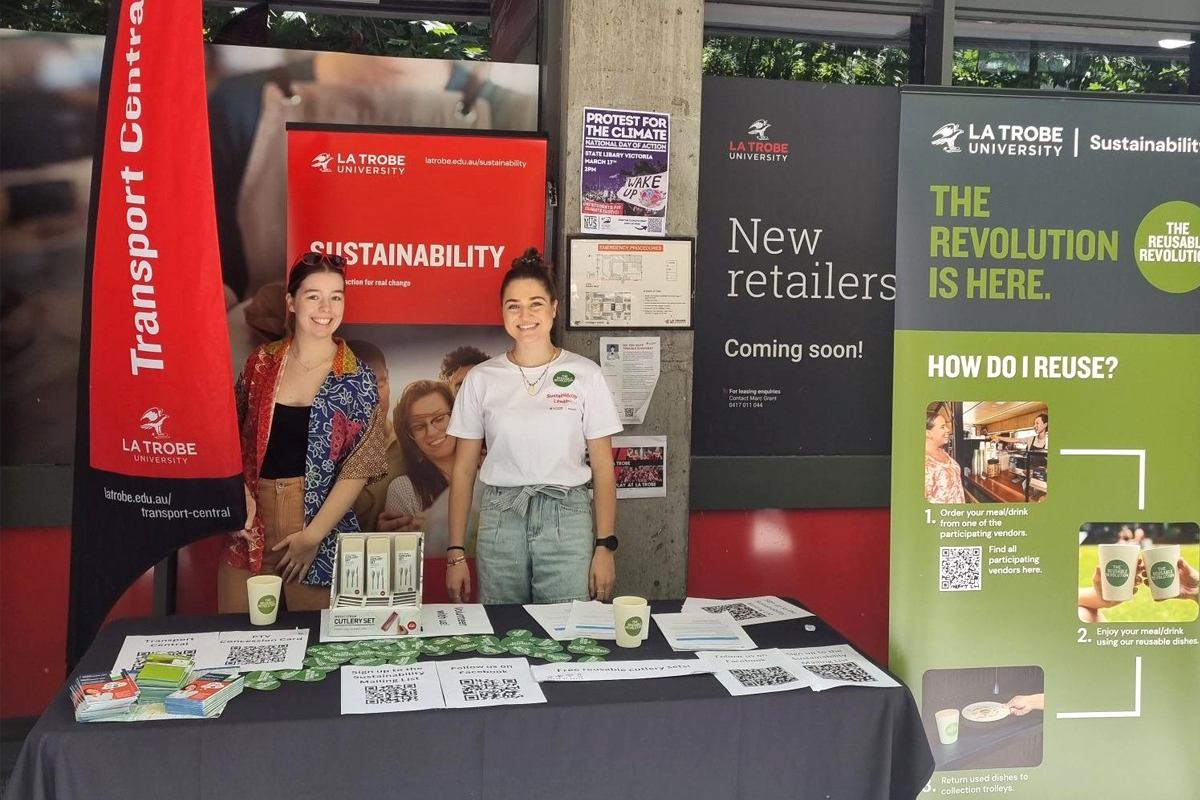
Sustainability Leaders creating real impact!
La Trobe created a unique Sustainability Leaders volunteering program to increase engagement with students on campus and empower them to act against waste and promote sustainability. It included the following initiatives:
- Promoting the reusable crockery implementation,
- Increasing knowledge action of other students on campus to diversion comingled recycling and organic waste from landfill.
- Focus on waste audits and data,
- Improved signage through new waste posters for students living on campus.
- Collaboration with Cirka (our cleaning and waste partner) to create a waste wall and;
- Learning all things sustainability (net zero, biodiversity, waste, reusables, engagement)
These initiatives yielded significant results and with a reduction in waste contamination by almost 40% at the residential buildings and engagement with over 80 groups of people for the Reusable Revolution.
Creating Impact

Where knowledge meets habits: Empowering students for a sustainable tomorrow
Our online Sustainability Challenges offer participants an engaging, self-paced learning experience centered around a specific United Nations Sustainable Development Goal (UNSDG). Requiring minimal resourcing and at zero-cost to participants, we’ve created replicable, compact, scalable, and impactful learning opportunities that result in real impact.
The Challenges follow a structured process that moves participants from knowledge gain to simple action to celebration, to establish small but mighty habits relating to waste and carbon emissions. This approach recognises that knowledge alone is often insufficient to drive behaviour change, and that ease of action and celebration are crucial components in creating sustainable habits.
Sustainability Champion – Staff/Winners
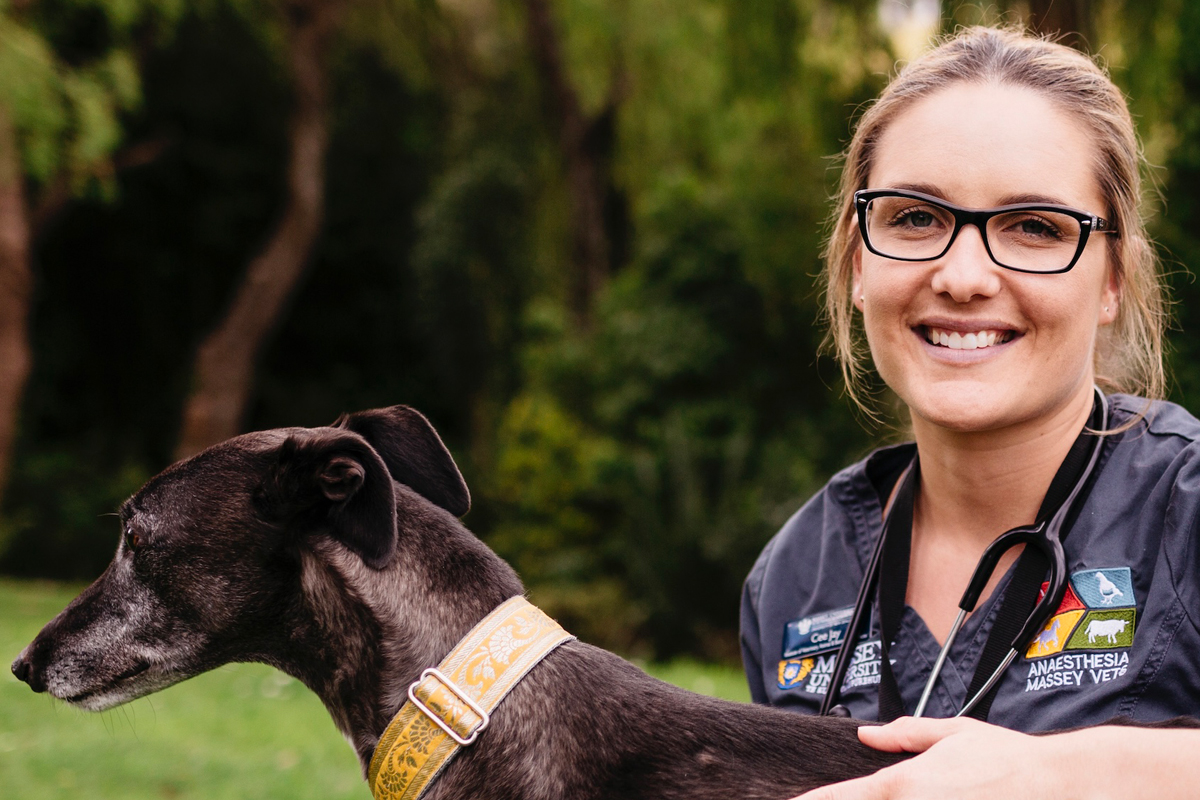
Catherine (CeeJay) Donovan
Veterinary nurse – Anaesthesia
From establishing the Massey Vet School Green Team to leading impactful initiatives, my commitment to environmental sustainability has been making waves. With the help of my team, I have accomplished numerous small, yet meaningful actions, including integrating a sustainability lecture for final year vet students and implementing battery recycling alongside rechargeable battery use. Our larger projects encompass the introduction of green waste and soft plastics recycling bins, an energy audit resulting in power-saving measures, and playing a part in a successful rubbish audit. I spearheaded the ‘6 in 6’ campaign, empowering individuals with six simple steps for workplace sustainability. Through the SustainaVet social media pages I help to educate and inspire peers nationwide. As the Massey School of Veterinary Science sustainability champion, I had the privilege of speaking at the annual veterinary conference on sustainability in clinical practice. Currently I’m conducting pioneering research on responsible cat waste disposal. Together, we’re forging a greener future, one initiative at a time.
Sustainability Champion – Student

Louis Walmsley
SDG Coordinator Monash Association of Sustainability, Office Bearer Monash Student Association’s Environmental and Social Justice Department, Masters of Environment and Sustainability Student
Louis is an exceptional student sustainability leader at Monash University. His passion and dedication to sustainability have made a significant impact on the community. Louis’s values revolve around sustainability, which is evident upon meeting him. He actively participates in various sustainability groups, demonstrating his commitment to creating a more environmentally conscious society.
One of Louis’s notable involvements is with Precious Plastic Monash, where he organizes remarkable events and fosters collaboration among like-minded individuals, student groups, and staff. His contributions to the Monash Association of Sustainability have allowed him to conduct valuable research on plastic usage and climate action, resulting in positive changes within the university.
Through his work with the Monash Student Association, Louis has engaged hundreds of students in fun and interactive sustainability initiatives. He took the initiative to organize a sustainability food fair, which was one of the largest sustainability-related events held at Monash post-COVID. This accomplishment is a true testament to Louis’s hard work and creativity.
Louis is an outstanding student leader whose efforts in sustainability have had a lasting impact on Monash University and its community. His inspiring nature resonates with everyone who knows him.

